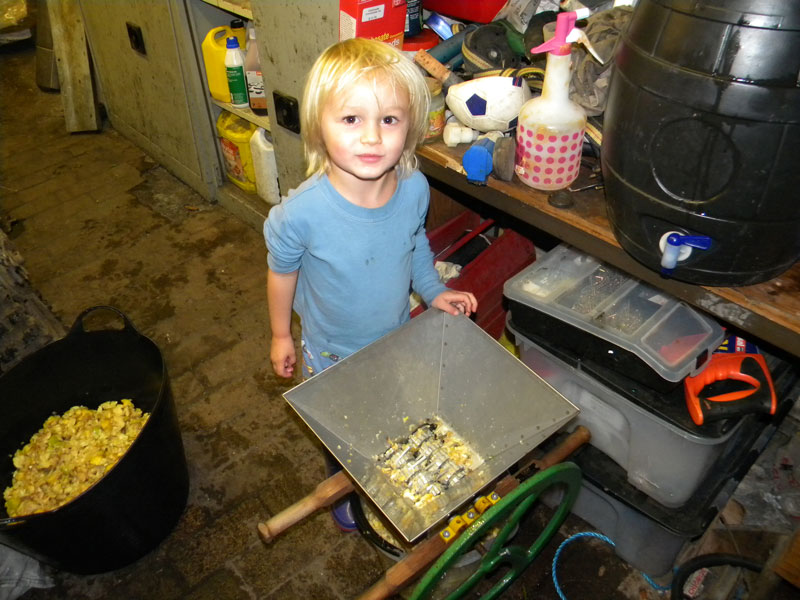Welcome to the very first blog post from Worley’s Cider. I’m hoping to use this space to offer an insight into the world of making cider – and, as you’ll find out in a moment, perry. Right, scene set, now let’s get on with the real business…
Pear season
Although I’ve been making cider for a number of years, perry is something I’ve never attempted, so it was an exciting moment a couple of weeks ago when a new acquaintance said he knew a bloke with a few spare perry pears from a group of young’ish standard pear trees. Off we trundled to Nunney, near Frome with a couple of buckets, a handful of sacks and a spring in our step.
First we picked up a variety called Thorn. These ripen very early in the season and tend to deteriorate quickly. I milled these pears the next day and left for 24 hours to press the day after that. The juice contained low-ish levels of sugar (OG 1045) with reasonable acidity and quite strong tannin.
We also collected a few Blakeney Reds. This is a relatively widely planted perry pear variety that tend to ripen a bit later than Thorn. They weren’t quite ready to mill, but were milled a couple of days ago and pressed last night. Blakeney Red is reputed to make a pleasant, not-too-challenging perry and our juice was low in acidity and sugar with soft, earthy tannins.
Spurred on by all this pear-related activity, we decided to take things a step further and see if we could find any more pears to collect. Cider photographer Bill Bradshaw heard of our new-found interest and offered up a tree near Langport in the garden of a farmer friend of his. This was a much older tree and yielded way more pears, but the variety was unknown. We were possibly a bit late to the tree as many of the fallers were on the turn already, but we picked up three good sackfuls of fruit to take home. These pears were milled fairly sharp’ish and again left to macerate for 24 hours. Talking of sharp’ish, the juice from this pear turned out to be highly acidic, with strong astringent tannins and a healthy level of sugar (OG 1060).
We’ve one more tree left to harvest, which is on the edge of Shepton Mallet. Again, we have no real idea what variety the fruit is, but this year is all about learning as far as perry-making is concerned, so we’ll find out how good these trees are some time in the Spring.
Back to the apple
But time marches on, and the cider apples are also now starting to flow. I’m a bit more confident with the round fruit, so this feels a more comfortable part of the season to me. We headed off Taunton way on Tuesday last and hand-picked a tonne of Somerset Redstreak. They need pressing fairly quickly as the apple has a thin skin and doesn’t last well – particularly in the unseasonably warm weather we’re currently enjoying. But the smell of a tonne of sacked apples baking in the sun outside your front door gets you right into the state of mind you need to get stuck into the three months of hard work that lie ahead of all cider makers at this point of the year.




Can’t wait to try some of that deluxe Somerset Perry from Worleys! How is it going? Is it still bubbling?
Oh yes, Bill – it’s still underway. That unknown Langport pear was probably the most interesting juice we made: very acidic, very sweet and very tannic – quite a combination. It will indeed be interesting to see how it works out. See if it was worth clambering up into the damn tree for
Neil
http://www.worleyscider.co.uk